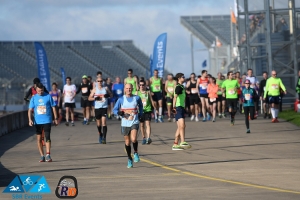How to properly cool down after a workout
6th August, 2018
Like with the warm up you may be tempted to skip cool down, but there are reasons that validate the importance of cooling down.
Benefits of a cool down
- Allows heart rate to return to normal. Cardiovascular or aerobic exercise can increase your heart rate significantly so at the end of your run, you want your heart rate to return to normal slowly to prevent light-headedness feeling faint.
- Gradually slows the rate of breathing. When your heart rate increases with exercise, so does your breathing. These are signs you are working hard. A cool down allows your breath to steadily return to the same rhythm it had before you started your run.
- Helps prevent muscle soreness. It's common to feel stiff or sore after run. A cool down jog and stretch may help your body to feel better in the hours and even days following your run.
- Improves relaxation. Your cool down is a great time to reflect on how you felt your run went and give yourself some self-praise for the hard work you did. This can help create a sense of relaxation and well-being.
How to Do a Cool Down
The way and how much cool down you do will largely depend on what run session you did. For example, an easy 5km run will likely only need a brisk walk for 2-3 minutes, then gradually taper your pace to a stroll followed by some stretching. But, a set of hard efforts will demand a longer cool down run, walk and a longer stretching session.
Stretching tips post run
- Important post-run stretches include the following parts of the body, but not exclusive to: hamstring, quads, calf muscles, IT band, hips and back muscles, arms and abs and triceps.
- Hold still on each stretch for 15 to 30 seconds. No bouncing.
- If you feel pain, don’t stretch. Discomfort yes, but not pain. Don't stretch beyond the point where you begin to feel tightness in the muscle. You shouldn't push through muscle resistance. As you feel less tension, you can increase the stretch until you feel the same slight pull.
- Make sure you stretch both sides equally and not just an area on one side of the body because it feels tighter than the rest.
- Keep your body relaxed, and keep breathing – it is important to get an oxygen supply to the muscles for repair.
- Mcgowan CJ, Pyne DB, Thompson KG, Rattray B. Warm-Up Strategies for Sport and Exercise: Mechanisms and Applications. Sports Medicine. 2015;45(11):1523-1546. doi:10.1007/s40279-015-0376-x.
By Natalie Pugh (BTF Triathlon Coach -Level 1)


